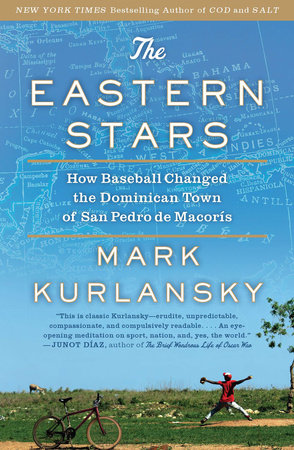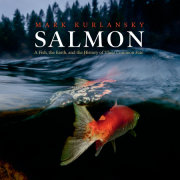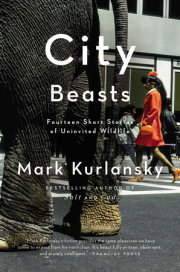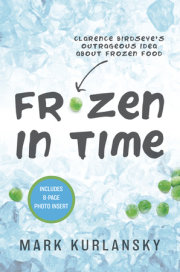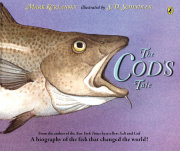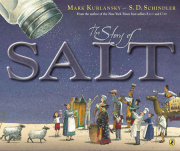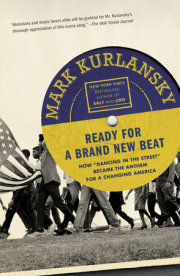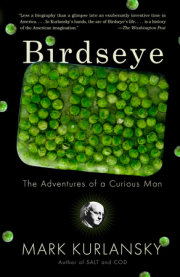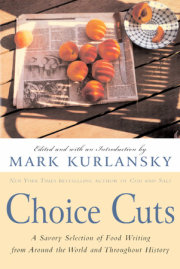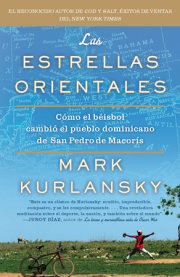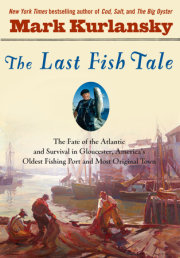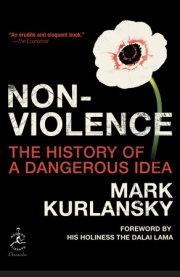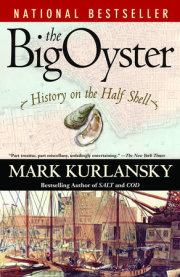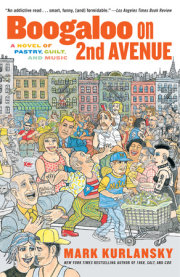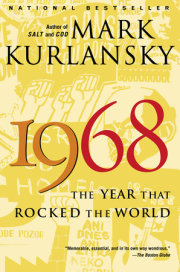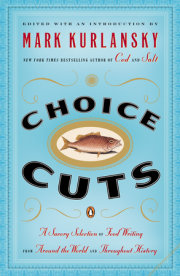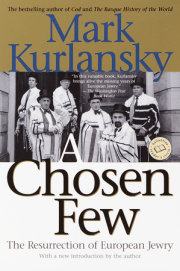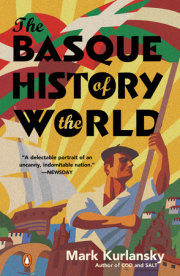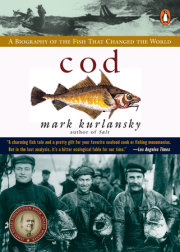Part One
Sugar
La caña triturada, como una lluvia de oro,
en chorros continuados, baja, desciende y va
allí donde la espera la cuba, para hacerla
miel, dulce miel, panal.
El sol que la atraviesa con rayo matutino,
de través, como un puro y muy terso cristal,
sugestiona, persuade, que se ha liquefacto
la misma luz solar.
The ground-up cane, ring of gold,
continuously spurting, comes down, goes down and goes
where the bucket awaits it, to make of it
Honey, sweet honey, honeycomb.
The sun shining straight through it with morning rays,
crosswise, like a pure, terse glasswork,
suggesting, persuading, that what has liquefied
Is the very light of the sun.
—Gastón Fernando Deligne, “Del Trapiche”
Chapter One
Like the Trace of a Kiss
It is easier to describe San Pedro de Macorís, and the unique history and cultural blend that formed it, than it is to explain the country in which it was formed. There is a strange ambivalence to the Dominican Republic. Pedro Mir, the Dominican poet laureate from San Pedro de Macorís, described his country as:
Simply
transparent,
Like the trace of a kiss on a spinster
Or the daylight on rooftops.
Of the nations called the large-island Caribbean, the ones that by size should dominate the region, the Dominican Republic is the one with the least impact and the least distinct culture. The others all have poetic names: Haiti, Cuba, Jamaica, Puerto Rico, and Trinidad. The Dominican Republic has a name that seems a temporary offering until a better idea comes along. Even Puerto Rico, which has the odd history of having never been an independent nation, seems to have a stronger sense of itself. The Dominican Republic, one of the first independent nations in the Caribbean, seems to struggle with its identity.
It is a country that has usually been out of step with history, left behind in the Spanish empire, left behind in the independent Caribbean; even on its own island, it is the country that isn’t Haiti. Almost as poor as Haiti but not quite, neither as tragic nor as romantic, the Dominican Republic missed the first sugar boom in the eighteenth century and came late to the second one in the nineteenth century. As with baseball, its sugar industry ran behind those of Cuba and Puerto Rico, and the Dominicans had trouble positioning themselves.
Dominicans speak Spanish, but it is not a very Spanish place. It is neither as Latino nor as African as Cuba. Dominicans have developed distinctive and celebrated music forms, but they are not as influential nor as recognized as the many forms of Cuban music or Jamaican reggae or Trinidadian calypso. It does not have the strong tradition of visual arts and folk crafts for which Haiti is known, and in fact Dominican tourist shops are filled with Haitian paintings and crafts and bad knockoffs of them. They also sell tourists Cuban cigars because Dominican ones, some of which are very good, don’t have the same cachet.
The Dominican Republic is nothing like its neighbor across the island, Haiti, which is a far more African place. But except for the Spanish language and baseball, it doesn’t very much resemble Cuba or Puerto Rico, either. Despite a long and mostly painful relationship with the United States and the fact that money shipped home by Dominicans in the United States is a major prong of the struggling economy—the third poorest in the Americas—the Dominican Republic has not become very Americanized, either. Major League Baseball is acutely aware that the Dominican ballplayers sent to the U.S. are lost in a very strange and different land.
It is tempting to say that baseball defines it, but it got the game from Cubans, Puerto Ricans, and Americans. Dominicans have excelled in the game, and in the last few decades baseball has at last become something at which Dominicans dominate—at last, something they can be known for—and this is a source of pride. From 1956—when Ozzie Virgil, from the northern Dominican town of Monte Cristi, became an infielder for the New York Giants—through 2008, 471 Dominicans played in at least one major-league game. One in six of them have come from the relatively small town of San Pedro de Macorís.
But even this celebrated accomplishment may be slightly tarnished by the fact that Cubans dominate Caribbean play and always have. It is U.S. law, which forced Cuban ballplayers to defect if they wanted to play in the U.S., that gave Dominicans their opening in baseball. In February 1962, when the United States imposed an embargo on Cuba, only six Dominicans had ever played in the major leagues.
Despite all its murky ambiguity, the Dominican Republic really is a distinct country with its own society and culture and way of doing things unlike anyplace else. This has made Dominicans love their homeland and yearn for it when they are away. It is just not very easy to articulate what it is. In the past twenty years there has been a marked growth in tourism, but it has been a style of tourism that spirits away visitors to walled-off resorts, safely away from the Dominican reality. The impression these visitors are left with is so false that the country may be even less known than it was when almost no one came.
There are Dominican characteristics. Not surprisingly, given the violent history of the Dominican Republic, there is violence in everyday Dominican life. There is domestic violence, but also the recent decline in the economy has been accompanied by a rise in street crime, especially by young men. The mayor of San Pedro, Ramón Antonio Echavaría, said street crime was the biggest problem facing his town. But also national human rights groups complained that in 2008 alone almost 500 people, most of them under the age of thirty-five, were shot and killed on the street by police, who admit to only 343 of the killings.
Despite all this, Dominicans have a sweetness to their demeanor. They smile and embrace one another far more easily than most people. Americans, trying to instill American ideas of sportsmanship, tell ballplayers in Dominican youth programs to come out and shake their opponents’ hands after a game. They come out to the field and for a brief moment begin the unnatural hand-shaking ritual but quickly begin hugging each other. That is what Dominicans do.
Dominican men are infamous for sexism. Yet women are common— though far from dominant—in the professions, especially as doctors. The image of the strong Dominican woman is celebrated—notably the three Mirabal sisters, upper-class women who resisted the Trujillo dictatorship and were murdered on their way home from visiting their husbands in prison. In fact, the founding legend of Dominican resistance was a Taino woman named Anacaona. After her husband was killed by the Spanish, Anacaona became leader of all the Tainos and was captured by the Spanish while trying to negotiate peace. The Spanish governor, Nicolás de Ovando, had her hanged.
Mothers are revered, and it is not unusual for a man to decide to use his mother’s last name rather than the traditional father’s name. In Spanish names, there are two last names, the father’s and then the mother’s. Although the father’s name is in the middle rather than the end, by tradition it is the one that is used. But Dominicans often choose their mothers’ names. An example is the slugger Ricardo Jacobo Carty. Jacobo was his father’s name and Carty his mother’s, and by Spanish tradition he would have been called either the full name or Ricardo Jacobo, but instead he always called himself Rico Carty, after his mother. There are many other San Pedro examples.
Dominicans are very attached and loyal to their families. This, of course, is not uniquely Dominican, but what is striking is how much they focus on immediate family and often how little interest is shown in the broader community. The sense of nation is even weaker still.
Like many Caribbeans, Dominicans love to dance, often excel at it, and find fellow countrymen who can’t dance to be odd. It seems that a love of dance has always been a Dominican trait. The eighteenth-century Spanish colonial rulers were disturbed by the ubiquity of Dominican dancing, and in 1818 the governor finally issued an edict prohibiting dancing on public streets at night without a permit. Many Dominican dances of the period, as in other Caribbean islands, were rooted in the European dances of the day, such as the minuet.
Then, in the nineteenth century, the merengue appeared. To Dominicans, this music form is one of the few things that are distinctly and uniquely Dominican. But musicologists point out that a number of islands, such as Cuba and Puerto Rico, had merengues and may possibly have had them significantly earlier. Worse, from the Dominican point of view, one of the earliest merengues originated in Haiti, and the music appears to have first turned up on the Dominican side in the late eighteenth and early nineteenth centuries, when Haitians started coming over during the very violent Haitian revolution. Dominicans can live with the idea that their game, baseball, came from America and Cuba but not that their music came from Haiti. The Dominican Republic was invaded and occupied several times by the black nation with whom it shares its island, and anti-Haitianism, often expressed in racial terms, is a central Dominican obsession. In fact, it is popularly believed, though probably not true, that merengue was created to celebrate the end of Haitian occupation in 1844.
The music was named after meringue, the sweet and fluffy confection that is nothing more than egg whites, air, and sugar. Both the word and confection are French, suggesting a Haitian connection.
Merengue was always dance music. Throughout its many changes, it has remained in swiftly bouncing 2/4 time, heavy on the downbeat. It was originally played on numerous variations of guitar made of a gourd with ridges that is scraped, called a güiro—the modern metal version is called a güira—and a drum that was beaten on one end and played with sticks on the other. Dominicans have tried to attach symbolic importance to this drum because it has a male and a female side. The pounded side has a billy-goat skin and the stick side is covered with the skin of a she-goat. Dominicans commonly say that the güiro is an authentic Dominican instrument invented by the pre-Columbian Taino Indians. Anthropologists have refuted this. In fact, there is some troubling evidence that it may really have come from Puerto Rico.
About the time the accordion was added to the merengue band, the music was denounced by prominent citizens, including former president Ulises Francisco Espaillat. Espaillat claimed that merengue was dangerous and called it “fatal” because it attacked the nervous system and caused imagination to spin out of control.
He may have had a point. Like sex, it is a physical excitement that presents an alternative to rational thought. In the years since Espaillat, the instrumentation has gotten both more elaborate and louder with the inclusion of a brass section. The beat remains frenetic and engaging, an exhilarating and somewhat numbing expression of energy for energy’s sake. With large speakers and powerful boom boxes, merengue has ensured that Dominican towns are not quiet at night; and now, with the advent of iPods and tiny earphones, it can be blasted into the ear canal and directly patched into the brain. Things you cannot do while listening to merengue: reflect, stand still, be sad.
Since the 1960s a newer music, bachata, has emerged from poor rural areas. This is the Dominican equivalent of country music: sad ballads of unrequited love. While it is also claimed as a distinctly Dominican form, it clearly has its roots in the Cuban bolero.
The ambiguous and confused Dominican identity, like all national identities, is rooted in history. The Dominican Republic, in a region known for harsh histories, has a particularly difficult, somewhat strange story of a land and a people struggling for centuries to find a path to nationhood. In five hundred years it was invaded twice by the Spanish, three times by the Haitians, twice by the French, and twice by the Americans—if you don’t count sugar companies or Major League Baseball. Dominicans have also on their own initiative at different times asked to be annexed to Spain, Britain, Colombia, France, and the United States.
The one Dominican moment with an undisputed claim to world history was in 1492 when Columbus landed there, named the island Española to leave no doubt about ownership, and established the first European colony in the Americas. It became a base for the Spanish conquest of America, and most of the butchers who conquered for Spain—including Cortés, Pizarro, Ponce de León, and Balboa—passed through there.
Gold was the Spanish obsession of the time, and when they found some they enslaved the locals to mine it. Only twenty-five years later, most of the gold and most of the locals were gone. The Spanish had worked to death or infected with fatal diseases all but 11,000 of the estimated population of 400,000, earning Santo Domingo an important place in the history of genocide.
Understandably, Dominicans do not feel comfortable with their founding history. There is no Columbus Day holiday in the Dominican Republic, because they knew him too well. Yet there is a certain pride, especially in the capital city, in the firstness that Columbus gave them—that Santo Domingo is the oldest European city in the Americas and its university the oldest in the Americas.
But with both the gold and the population gone, Santo Domingo became a backwater, never again to play a major role on the world stage. Sugar, which for a thousand years had been a Mediterranean product, could be produced more cheaply in the Caribbean tropics. The Dominicans were one of the first sugar producers in the Americas. The original colonists tried it, harvesting the first Dominican sugar crop in 1506. But despite high sugar prices in Europe, Dominicans failed to become major sugar producers. Sugar requires a great deal of labor, and the Spanish, having killed most of the locals, were left with an underpopulated island. Like other islands, they began importing African slaves, but starting in 1522 the slaves began rebelling. Soon there were more runaway slaves than Spaniards in the colony.
Away from the capital, in the far western regions of the second-largest Caribbean island, local sugar was being sold illegally to enemies of Spain, such as France and Holland. The Spanish solution was to burn and destroy all the coastal agriculture on the western side of the island, where the smuggling had taken place, and forcibly vacate the area. As a result, it was taken over by the French, who turned it into the most profitable colony in the world, while the eastern Spanish half remained impoverished and neglected.
In the late eighteenth and early nineteenth centuries—when the French side exploded in what would be the Americas’ first successful African slave rebellion and in what became the world’s first postcolonial black nation— the Santo Domingo side continued to drift.
In 1795, during the Haitian revolution, the French took the Spanish side away from Spain. The Dominicans rebelled and threw the French and the Haitians out but, instead of declaring independence, asked the Spanish back. From 1809 to 1821 the Spanish ruled again, but they ruled harshly and were indifferent to developing the colony. Tired of Spanish rule, the Dominicans rebelled again—as did most of the Spanish colonies at the time—and in a rare moment of triumph the Dominicans drove the Spanish out and declared their independence. This should have been the moment of national glory, the founding moment in the nation. But immediately a sense of panic seemed to grip Dominicans about being alone in the world. They entered into negotiations with Simón Bolívar, the great South American liberator from Venezuela who dreamed of one large independent Latin American nation called Gran Colombia.
Instead the Haitian army invaded in 1822 and, with little resistance, took over and immediately abolished slavery. The Dominicans never even had their own abolitionist movement. Haitian rule was not only antislavery, it was antiwhite—even antimulatto—and the Haitians, wishing to make the eastern side of the island blacker, encouraged black immigration from the United States and got five thousand blacks, mostly from New York and Philadelphia—many of them freed slaves—to move to underpopulated areas. After twenty years of occupation, the Dominicans were left a little bit Spanish, a little bit French, not quite black or white— the only mulatto country, obsessed with race and deeply insecure.
Dominican history teaches of the Dominican military victory that drove the Haitians out in 1844. But one of the Dominican leaders, Buenaventura Báez, was educated in France and seems to have suffered from that age-old affliction Francophilia. When he returned from France, he collaborated with the Haitian occupiers while opening a dialogue with the French government on having France take over the Dominican Republic, known at the time as Haiti Español. There is some evidence that the French had a hand in negotiating the Haitian retreat. Even as Haiti Español was being christened the independent nation named the Dominican Republic, negotiations were under way for the French takeover.
Dominican historian Frank Moya Pons wrote about a “defeatist attitude” that set in, with a conservative upper class preoccupied with the fear that the Haitians would return and take their property. In the first years as an independent nation, Dominicans discussed possible takeovers by not only the French but the Spanish, the Americans, and the British. This was threatening to the Haitians—particularly their leader from 1847 to 1859, Faustin-Élie Soulouque—who feared above all else an attempt by outsiders to reestablish slavery in Haiti. Soulouque, a black brought to power as a puppet of the upper-class mulattos, had a surprising cunning and quickly consolidated power and crowned himself Emperor Faustin I. A militant black nationalist, his fear of foreigners— especially Americans, who by then ran the leading slaving nation—led to three attempts to retake the Dominican Republic. This in turn led the Dominicans to a desperate desire to be taken over and rescued by a foreign power.
None of the four powers under consideration was particularly interested in acquiring the Dominican Republic. Columbus, it seems, was the first and last to have considered it a prize. The French were interested only in Haiti and had gotten the Haitians to agree to a huge indemnity in exchange for recognition of the nation. The only French interest in the Dominican side was to stop the Haitians from spending all their money trying to take over the Dominican Republic instead of paying them. The British and the Spanish were concerned only about American designs on the real prize, Cuba, and feared that the U.S. saw the Dominican Republic as a stepping-stone. Far from worrying about preserving their nation while all these militarized world powers were looking them over, many Dominicans, not all of them white, were claiming Spanish citizenship. Spanish law promised citizenship to any descendant of a Spanish colonist. As Spanish citizens, they were exempt from Dominican military service.
But at the end of the international debate, in 1860 the Spanish came back. Dominicans did not like Spanish rule this time any more than they had the other times, and they fought a war of independence against the Spanish, which they won in 1865. They were independent at last, and from 1865 to 1879 had twenty different governments.
In despair and defeatism, Dominicans tried to become part of the United States. U.S. president Ulysses S. Grant was interested but the American people had no interest in the Dominican Republic, and so most politicians were not particularly receptive; the project was rejected by the Senate in 1871. In fact, Massachusetts senator Charles Sumner, an old-time abolitionist, was remembered in the U.S. as a hero for opposing the measure and sparing the U.S. the annexation. Once Dominicans came to know the U.S. better, Sumner came to be remembered with equal admiration by Dominicans.
An independent Dominican Republic, without economic resources, went deeper into debt and was increasingly controlled by foreign financial institutions. In everything the Dominicans tried to do, they were divided between two bitterly opposed groups: the reds and the blues, the Partido Rojo and the Partido Azul.
It was the fate of the Dominican Republic to fill odd footnotes in history and never center stage. World War I was the pretext for a U.S. invasion of the Dominican Republic. As World War II approached, when the world turned its back on German Jewish refugees, the Dominican dictator Trujillo took them in—welcoming them not out of a sense of humanity but to blanquear, whiten, the racial makeup of Dominicans, just as the Haitians had welcomed American blacks to darken it.
When World War I was breaking out, the Americans discovered that Dominican waters were in danger of a German takeover, so they took over instead. In truth, the invasion was part of a policy that went back to 1898 of securing the Caribbean for building the Panama Canal. The U.S. during this period found excuses to invade six Caribbean nations, including both Haiti and the Dominican Republic. The Americans suspected that the Dominicans, given their history and their deep debt to European banks, would one day throw in with the Europeans, right in their own backyard, at the gateway to Panama.
In remarkable similarity to the invasion of Iraq not quite ninety years later, the U.S. invaded in 1916 with few clear goals or explanations and was surprised to find that locals resented the American presence. Dominicans formed into small bands that sporadically attacked U.S. troops, who called them bandits. The U.S. created a Dominican national police force to control the rebels but struggled to get Dominicans to effectively take charge of this force.
The U.S. military established an officer training school in Haina. Among the graduates in the first class was a drifter and petty criminal named Rafael Leónidas Trujillo Molina. Although there had been some problems with this young enlisted man trying to extort money from the locals, the charges had been dropped and he was approved for officer training. Graduating a second lieutenant, Trujillo befriended high-ranking American officers and rose so rapidly that in 1924, when the Americans left, claiming they had stabilized the country and built an effective police force, Trujillo was a major. Soon after, he became a lieutenant colonel. The Americans had said they wanted to achieve stability, and indeed they had. Within six years of the American withdrawal, his opposition exhausted by its eight-year war with the U.S. Marines, Trujillo had gained complete control of the country. He kept it for thirty-one years, one of the longest-running dictatorships in history, until he was assassinated in 1961 with the complicity of the CIA.
Trujillo ruled by personal whim—“megalomania” was the word used by Jesús de Galíndez, a Basque refugee of the Spanish Civil War, in his doctoral dissertation on Trujillo at Columbia University, for which the general had Galíndez kidnapped from New York and brought to Santo Domingo. His body was never found, and the variety of gruesome stories that circulated about his end were testimony to the dark Dominican imagination. Of course, Trujillo himself had a Dominican imagination—none darker—and one of these grim stories was probably true. Galíndez, like many in the decades of Trujillo government, came to a very bad end. In his dissertation, which chronicles meticulously both the eccentricity and brutality of the regime, Galíndez reported that in 1935 Trujillo’s henchmen had assassinated a political opponent in exile in New York; that they had murdered another Dominican in 1952 on Madison Avenue; and that in 1950, in Havana, they had murdered Mauricio Báez, a union organizer from San Pedro de Macorís. None of this turned the U.S. government against General Trujillo.
The Jewish refugee incident is only one of many examples of Trujillo’s obsession with “whitening the race.” He whitened merengue by insisting on the version from the white Cibao region. Another attempt to whiten the race was made in 1937. While everyone was consumed with the epic baseball showdown between Ciudad Trujillo and San Pedro, Trujillo launched Operación Perejil, more ominously nicknamed the corte, the cutting down
.
Most Haitian-born people cannot say perejil, the Spanish word for parsley. Haitians speaking their mother tongue, Creole, tend to pronounce r as w, which is an African influence. And, like many English-speaking people, they struggle with the Spanish j, the jota, which, coming from Arabic, has a raspy h sound. Trujillo sent soldiers to the border region armed with sprigs of parsley. When encountering anyone who seemed suspiciously dark or had African features, a soldier would take out the sprig and ask the person to identify it. If he said something sounding like “pewidgil,” he was either sent across the border or killed. It is not known exactly how many were executed. The New York Times initially estimated between 2,700 and 3,000, but the killing continued. Galíndez guessed that there were more than 20,000 dead, and some estimates have been as high as 30,000 murdered. Those on sugar bateys were not touched, and it is supposed but not certain that Trujillo’s message was that Haitians could come to the Dominican Republic but had to keep to their bateys. Afterward the merengue composer Julio Eladio Pérez came out with the song “Trujillo en la Frontera,” “Trujillo at the Border,” in which the Dominicans of the border thank the caudillo for bringing peace and progress to the region.
Trujillo also tried to whiten himself. He was rumored to have some Haitian blood and was a little dark—nothing that couldn’t be fixed with the right amount of Pan-Cake makeup. According to journalist Bernard Diederich, who covered Trujillo in the 1950s, the general’s foundation would start to streak in the tropical heat and he would shoo away press photographers.
Trujillo’s story says much about the relationship of the United States and the Dominican Republic. Trujillo rose to prominence because of the U.S. military occupation. His murderous rule was tolerated by Presidents Hoover, Roosevelt, Truman, and Eisenhower—even in 1956, when his agents kidnapped Galíndez in New York. Although Trujillo was torturing and murdering Dominicans by the hundreds, what was important to Roosevelt was that Trujillo sided with the Allies; to Eisenhower, it was that Trujillo was a staunch anticommunist. But in June 1960, before Kennedy was elected, Trujillo tried to assassinate Rómulo Betancourt, the president of Venezuela. Then, shortly after Kennedy was elected in November, Trujillo killed the three Mirabal sisters. Once in office, Kennedy decided that the U.S. did not want him anymore, and soon Trujillo was dead.
In British novelist Graham Greene’s Our Man in Havana, police captain Segura, an infamous torturer, explains the idea of a torturable class: that a dictator could murder and torture as many people as he liked as long as he did not touch the kind of ruling-class people to whom other world leaders could relate. Trujillo had crossed that line. No longer just a killer of nameless brown people, he had become a rogue menace in the world. To deal with him, the CIA linked up with a Dominican underground that the U.S. had not helped for thirty years, and that was the end of the general. Trujillo ran the most successful kleptocracy in Caribbean history—not an insignificant achievement, considering the contenders. For a kleptocracy, success is marked by the amount stolen and the number of years in a position to keep stealing. Trujillo, although he ran only a small, poor country, became one of the richest men in the world and lasted longer than even the Duvaliers in neighboring Haiti—father and son combined. Of course, in reality the longest kleptocracy in Caribbean history was the centuries in which Europe sucked every ounce of wealth it could find out of its Caribbean colonies. Corporate America tried its best—after all, sugar could be grown in Florida and Louisiana, yet it was this history of kleptocracy that made the Caribbean seem appealing for business—but never lived up to the kleptocratic success of Europe. Then the Europeans and the Americans wondered at the tendency toward kleptocracy in these islands as though this were a peculiarly Caribbean affliction, perhaps caused by climate.
The key to Trujillo’s success was ruthless brutality and relentless egotism that sought to control and redefine everything in Dominican life. He owned most of the industry—including the sugar mills but also rice, beef, salt, and shoes—and controlled the baseball teams, and even dominated merengue with hits such as “Glory to the Benefactor,” “Trujillo Is Great and Immortal,” and the 1946 smash “We Want Reelection.” He danced the merengue to gain popularity with the peasant class, but he also whitened the music to appeal to the upper classes by imposing forms that came from Spanish poetry.
Dominican children placed bottle caps on their chests to resemble the leader with his self-awarded medals and custom-designed uniforms. It has long been believed that Dominican feelings of insecurity and ambivalence demanded a certain type of paternalistic strongman for leader: what is called in Spanish a caudillo—the type of leader that expected to be thanked for the sugar harvest. It is also widely recognized that this tendency, caudilloism, is one of the great problems of the Dominican Republic. When Trujillo came to power, one of the first officially sanctioned merengues said:
We have hope in our caudillo;
Everything will change with great speed,
Because now Trujillo is president.
After Trujillo was killed, for the next thirty years Dominican politics replaced the reds and the blues with Joaquín Balaguer and Juan Bosch. These two eternal brotherly enemies—Balaguer, the right-wing caudillo who had served as Trujillo’s president, and Bosch, the leftist idealist, friend of Fidel Castro—had so much in common that they appeared to be mirror images of the same person. Balaguer was born in 1906 in the northern Cibao region, a member of an elite group in the country’s wealthy region with the whitest population. Bosch was born in the same region and social class three years later. Bosch had a Puerto Rican mother, and Balaguer a Puerto Rican father. They were both white in a country where only about fifteen percent of the population is white. They both had literary aspirations, although Bosch’s tough and realistic short stories garnered more respect than Balaguer’s flowery, nineteenth-century-style poetry. More highly regarded was Balaguer’s writing on literature, which always reserved ample space for praising the work of his frère-ennemi, Juan Bosch.
One worked for Trujillo, the other opposed him and went into exile. They both lived and played central roles in the nation’s political life into their nineties, both seemingly refusing to either retire or die. The two old enemies could even join together to keep a third party out.
Balaguer was an aesthete who never married and lived in the servant quarters of the house of his six sisters. He wore dark suits and a fedora, and his only extravagances were a specially made limousine known as the Balaguermobile and a huge, dark, elaborately carved desk that he inherited from Trujillo, his extravagant predecessor. It was rumored that Balaguer had fathered illegitimate children throughout the country, but this speculation may have come from the difficulty Dominicans had in accepting men of power who were not oversexed. The sexual exploits of most of them, especially Trujillo and his son Ramfis, were legendary. When Trujillo’s assassins caught up with him on the road, it was said the dictator was on his way to a tryst.
But just their haberdashery showed the difference between the caudillos: Trujillo looked like a feathery cross between Napoleon and Lord Nelson as seen in a Gilbert and Sullivan operetta, while Balaguer resembled actor Karl Malden doing a credit card commercial.
Balaguer, with or without sex, lived to be the oldest head of state in the world—was he preserved by celibacy, another worrying rumor mill asked—hanging on after he was legally blind and his hearing had faded. Interviewed at his huge desk, which made the small man look even smaller, this writer asked him why the electrical system was constantly failing. While he was denying this obvious truth, the electricity went off in the palace, but Balaguer continued with his denial, too blind to know what had happened.
Bosch was also a colorful octogenarian. He liked to take journalists to the slums and show his outrage at the wretched housing by pulling shacks apart while the poor family helplessly watched what little they had being torn up. Successive U.S. governments liked Balaguer, who had formed his right-wing party while in exile in New York. The Kennedy administration initially supported Bosch despite the claim of opponents that he was a communist. But once in power, as a result of one of the rare untainted democratic elections in Dominican history, Bosch made the mistake of seeking economic independence from the U.S. by awarding public contracts to Europeans. Washington began to fear Bosch, and after he was removed in a military coup in 1963, the U.S. invaded to prevent him from coming back to power. They put in his place Balaguer. In most Balaguer elections, fraud was suspected and violence was employed: in 1966, Balaguer had 350 Bosch supporters killed in order to ease his return to power. The U.S. accepted this as long as it was keeping Bosch from office. Once Bosch was no longer the opponent, the U.S. started criticizing the nearly nonagenarian president’s proclivity for fraud.
In 1992, for the four-hundredth anniversary of Christopher Columbus’s arrival, Balaguer ignored how badly the explorer is regarded in the Dominican Republic and spent $200 million to build a monument to him that could project light in the shape of a cross into the sky that would be visible for ten miles—that is, if they can ever get enough electrical power to light it up.
Having seen the U.S. completely manipulate the destiny of their country for generations, Dominicans understandably make the mistake of thinking that their country is a major priority of U.S. policy. But, in fact, the mistake of the nineteenth-century annexationists—who, once their proposal came to a Senate vote, discovered that no one in Washington was really interested in their country—is continually repeated. After President Lyndon Johnson sent troops to occupy the Dominican Republic, he sent down his top national security adviser, McGeorge Bundy, to report on the situation. But it turned out that the main reason for the assignment was not Johnson’s concern about the Caribbean nation he had just invaded but to force Bundy to cancel a planned debate with leading scholars on Vietnam policy. It was Vietnam, not the Dominican Republic, that was preoccupying Washington. It is always something else.
Copyright © 2010 by Mark Kurlansky. All rights reserved. No part of this excerpt may be reproduced or reprinted without permission in writing from the publisher.

